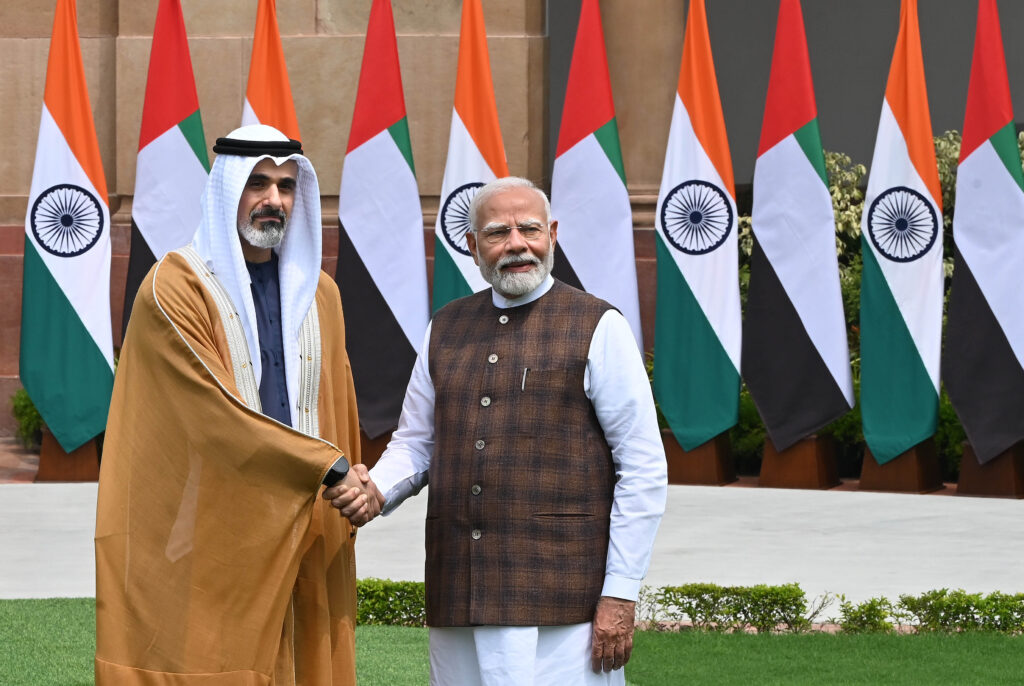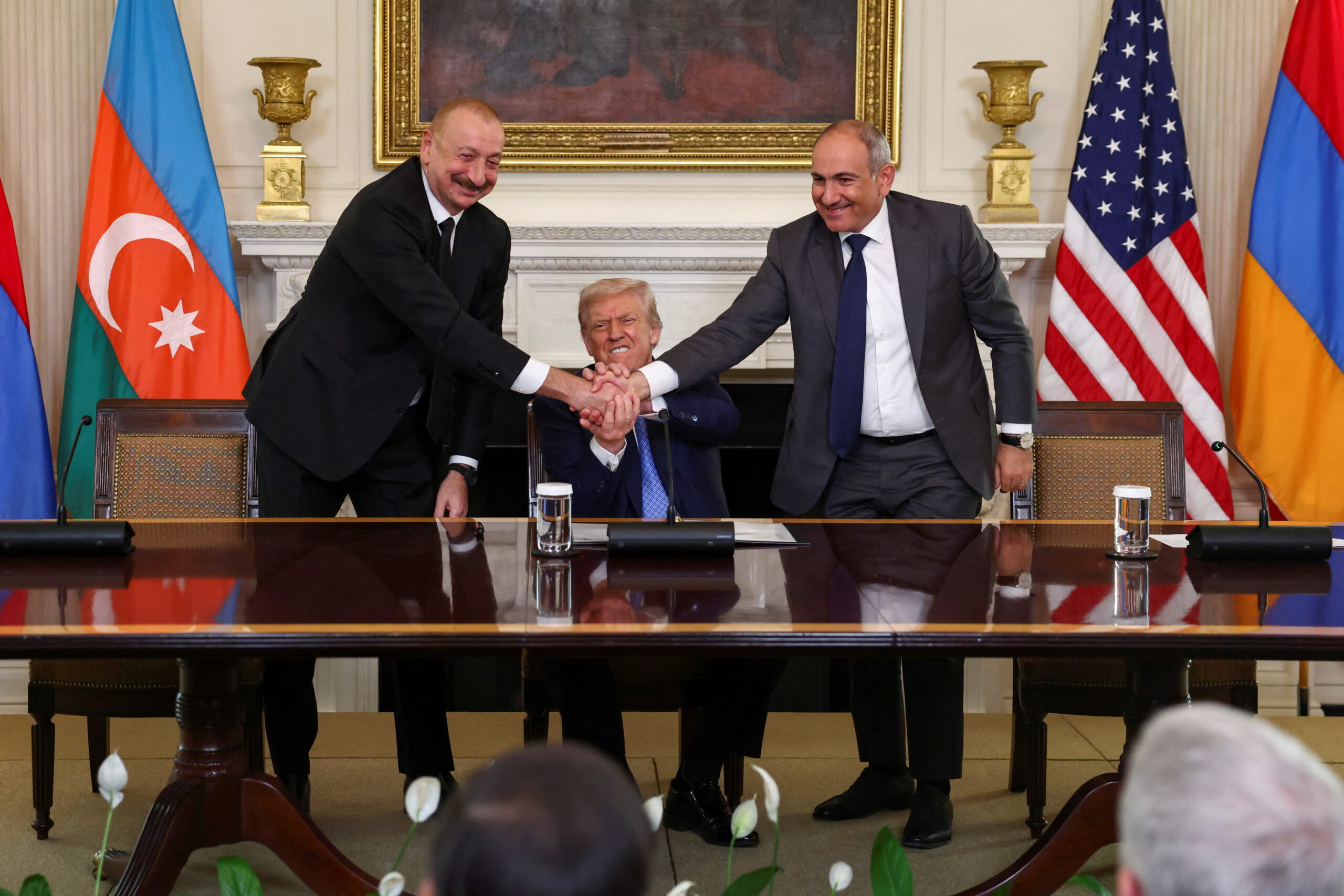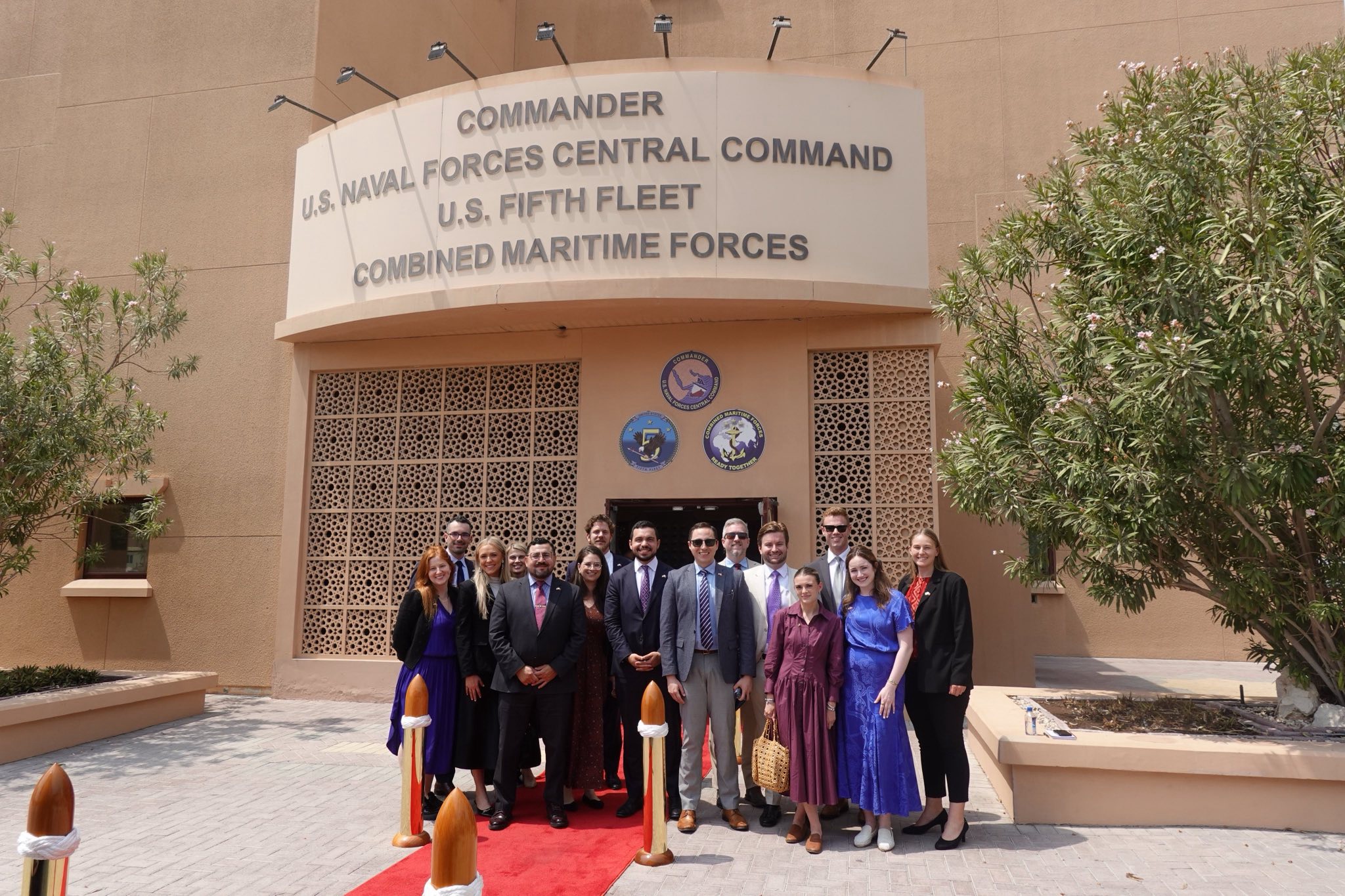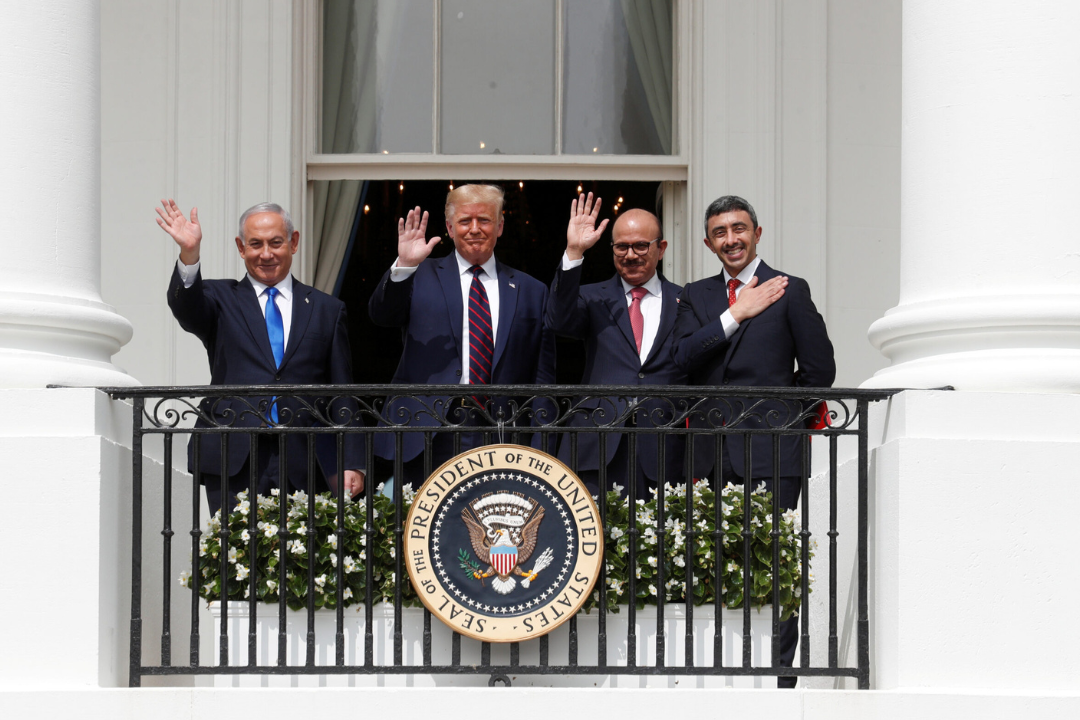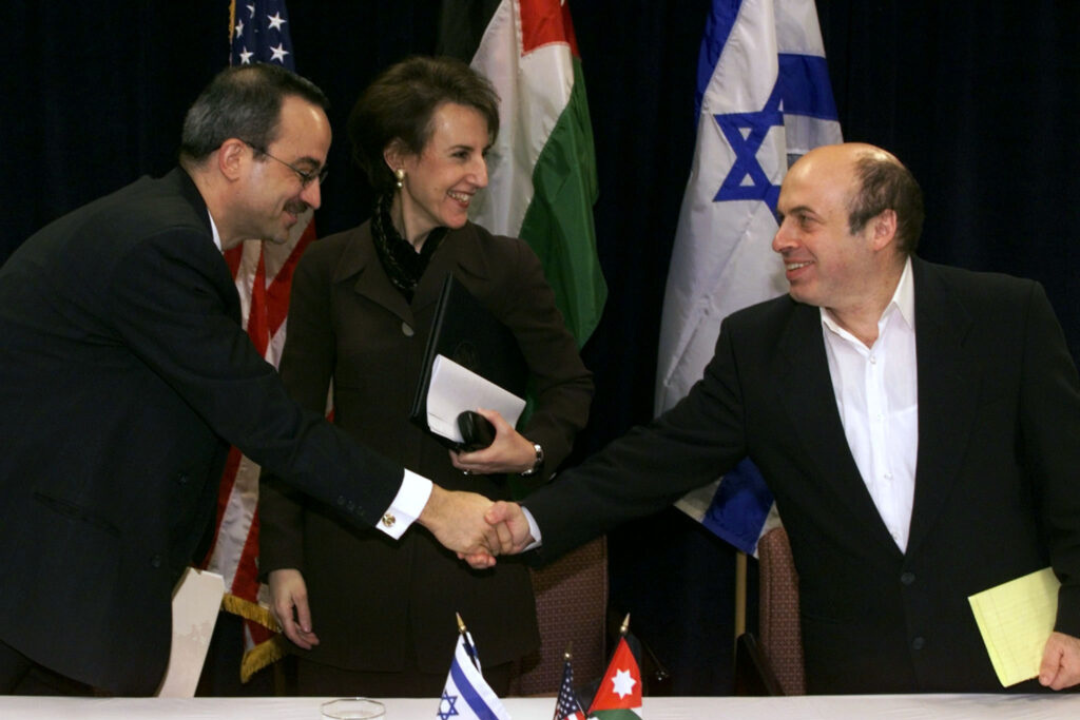Many in the shipping industry remain wary of the Red Sea. Houthi attacks on commercial vessels and the fallout from the Israeli-Palestinian conflict continue to disrupt maritime trade routes in the area. These disruptions impact supply chains by forcing shipping companies to reroute trade to longer and more expensive routes, adding both time and cost.
Nearly two years ago, the India–Middle East–Europe Economic Corridor (IMEC) emerged as a potential alternative to the existing volatile sea routes. When it was announced, IMEC offered partner countries, including the United States, the promise of a more secure and reliable trade route across the Arabian Peninsula. But the route itself is not IMEC’s only selling point. Additionally, participating countries stand to benefit from more streamlined, efficient, and transparent trade processes—deepening economic engagement and connectivity across regions.
The plans for IMEC envision it running from India and the United Arab Emirates (UAE) through Saudi Arabia, Jordan, and Israel, eventually reaching Europe. While political tensions have delayed progress on the Jordan-Israel segment of the transportation corridor, other components of the corridor continue to move forward, especially when it comes to economic cooperation between India and the Gulf states. This includes various port upgrade initiatives in India and the announcement of the India–UAE Virtual Trade Corridor (VTC) in September 2024.
With bilateral trade between India and the UAE reaching $100 billion in 2024–25 following the signing of the Comprehensive Economic Partnership Agreement (CEPA) in 2022, the VTC represents a timely and strategic boost to this growing economic partnership. This VTC is based on the Master Application for International Trade and Regulatory Interface, known as MAITRI. This platform seeks to integrate multiple digital systems and enable the seamless exchange of documents and trade-related information among regulatory stakeholders through a unified interface.
The India–UAE VTC, through the MAITRI platform, should be a starting point for building a seamless regional digital trade ecosystem across the IMEC countries. By enabling real-time data exchange, aligning customs procedures, and reducing paperwork, MAITRI and similar digital platforms can enhance trade efficiency along the corridor. Expanding this model across IMEC partner countries would help lay the foundation for a digitally integrated trade network that complements the physical trade corridor.

Linking MAITRI to IMEC
In the current global trading ecosystem, digital connectivity infrastructure has become as critical as physical connectivity infrastructure. There are many important aspects to track in cross-border trade, including duty assessments and payments managed by customs authorities, regulatory certificates, testing reports, and real-time cargo tracking and notifications by shipping lines. The India–UAE VTC through the MAITRI platform helps address these needs bilaterally. Extending MAITRI across IMEC could unlock far greater efficiencies by integrating partner countries into a unified digital trade interface.
A similar approach has worked farther east. The Association of Southeast Asian Nations (ASEAN) Single Window, ASW for short, stands as the benchmark for the digitalization of cross-border paperless trade within a regional bloc. Since its full operational launch in 2018, the ASW has made significant progress, with over 800,000 ATIGA e-Form D exchanges occurring in 2020 alone, demonstrating the scalability of digital trade solutions. The ATIGA e-Form D is an electronic document used in ASEAN trade, allowing for the exchange of data among member states. According to recent research, comprehensive digital trade facilitation measures can reduce costs by over 8 percent within ASEAN. This substantial benefit highlights why expanding the MAITRI VTC along the IMEC corridor should be a strategic priority.
The road ahead
The operationalization of the India–UAE VTC has been smooth, largely due to the CEPA between the two countries. CEPA has eliminated duties on most traded product categories and streamlined regulatory compliance and documentation requirements, enabling a more efficient implementation of the digital corridor. But extending the VTC to the broader IMEC region presents several challenges.
The system will need to accommodate the diverse combinations of bilateral and regional trade agreements of which the IMEC countries are a part. Saudi Arabia and the UAE, for example, are members of the Gulf Cooperation Council, which means they have standardized economic policies and customs regulations while other IMEC countries may not follow the same trade protocols. Additionally, the multimodal nature of the IMEC corridor—encompassing rail, road, and maritime transportation—adds further complexity. Each participating country follows distinct customs procedures, regulatory processes, and documentation requirements, contributing to a fragmented and less harmonized regional trade ecosystem.
To enable the extension of a MAITRI-based VTC across multiple IMEC countries, policymakers should take the following five steps.
- Establish a Joint Working Group on Digital Integration. IMEC partners should establish such a group to focus on extending MAITRI to the remaining IMEC countries. This group could be co-chaired by India’s Ministry of Ports, Shipping, and Waterways and the UAE’s Ministry of Economy, with relevant ministries from other IMEC countries as core members. The working group would be responsible for developing a roadmap for the phased implementation of the MAITRI platform across the corridor. Key stakeholders from the private and public sectors could contribute valuable technical expertise to this initiative.
- Launch a comprehensive trade process mapping. The key elements of this exercise should include identifying stakeholders involved in trade processes within each country; outlining benefits and concessions available under bilateral and regional trade agreements; cataloging existing digital systems used by stakeholders (such as Port Community Systems or customs platforms); and understanding differences in trade process nomenclatures and terminologies. Ultimately, achieving a harmonized trade ecosystem across IMEC countries will be critical for the successful implementation of a unified digital trade platform like MAITRI. The secretariat of the IMEC envoy in each country, whenever designated, could lead this initiative to better coordinate among domestic as well as cross-country stakeholders.
- Create a technology interoperability plan. This should include the use of common Application Programming Interfaces, harmonized data fields for cargo information, and standardized data formats aligned with international trade standards. The partners’ respective ministries of information technology, together with customs authorities, could lead this initiative, in coordination with the ministries of ports and railways in each IMEC country.
- Operationalize mutual recognition agreements (MRAs). This would ensure the cross-border validity of critical documents, such as testing certificates, rules of origin, and health certificates. India and the UAE have already operationalized bilateral MRAs for digital certificates under the CEPA framework, setting a precedent for broader regional adoption. Customs authorities and the ministries of commerce in each country should serve as the coordinating agencies for MRA implementation.
- Hold technical and capacity-building workshops. India and the UAE should jointly organize these workshops to familiarize IMEC partner countries with the technical and regulatory frameworks of the VTC and the MAITRI platform. These efforts will support the training of key stakeholders—including customs authorities, regulatory and testing agencies, port operators, and industry associations—across the IMEC region, laying the groundwork for effective implementation of the VTC.
As global trade corridors evolve to redefine cargo movement routes, robust digital infrastructure will be instrumental to ensuring connectivity. It will play an important role in consolidating new trade routes and encouraging the global trade community to adopt emerging corridors, such as IMEC. A digitally integrated IMEC will enable seamless cargo movement with faster clearances, strengthening economic partnerships among participating nations—particularly US partners such as Israel, the Gulf states, Europe, and India.
Given the deep economic linkages between the United States and IMEC countries, this integration will advance US trade and strategic interests by creating transparent and predictable supply chains, reducing shipping delays, and lowering shipping costs and time for US exporters and importers in Asia and the Middle East. Moreover, strengthened economic ties among partners in volatile regions could reduce the risks of disruption to US manufacturing supply chains. That relies on the digital world just as much as the physical.
Afaq Hussain is a nonresident senior fellow at the N7 Initiative, a partnership between the Atlantic Council and Jeffrey M. Tal, within the Atlantic Council’s Middle East Programs. He is also co-founder and director of the Bureau of Research on Industry and Economic Fundamentals (BRIEF), New Delhi.
Image: Prime Minister Narendra Modi welcomes Abu Dhabi’s Crown Prince Sheikh Khaled Bin Mohammed Bin Zayed Al Nahyan upon his arrival at Hyderabad House, on September 9, 2024 in New Delhi, India. Photo by Arvind Yadav/Hindustan Times/Sipa USA via Reuters Connect.

